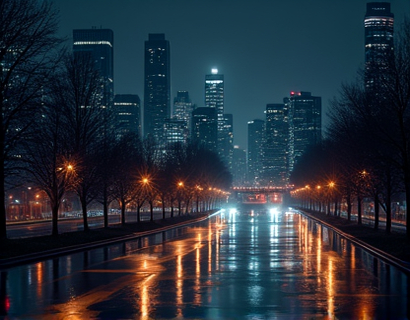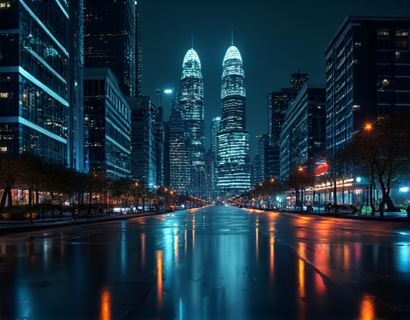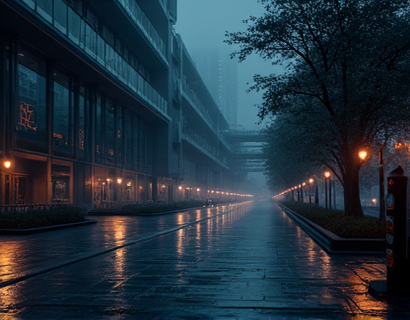Exploring the Ancient Indus Valley: A Comprehensive Guide to Cultural Heritage, Historical Sites, and Travel Essentials
The Indus Valley, a cradle of one of the world's oldest civilizations, beckons history enthusiasts and travel lovers alike with its rich tapestry of cultural heritage and historical landmarks. Spanning across present-day Pakistan and northwestern India, this ancient region offers a unique glimpse into the lives of people who thrived over 4,000 years ago. This guide aims to provide an in-depth exploration of the Indus Valley, covering its cultural significance, must-visit sites, and practical travel tips to ensure a memorable journey.
Understanding the Cultural Heritage of the Indus Valley
The Indus Valley Civilization, also known as the Harappan Civilization, is renowned for its advanced urban planning, sophisticated water management systems, and intricate craftsmanship. One of the most fascinating aspects of this civilization is its script, which remains undeciphered, adding an air of mystery to the artifacts and inscriptions found at various sites. The culture was deeply influenced by the Indus River, which provided the necessary resources for agriculture, trade, and daily life.
Art and craft from the Indus Valley are particularly noteworthy, with artifacts made from bronze, pottery, and precious stones showcasing the high level of skill and artistry. The famous figurines, such as the Priest-King and the Dancing Girl, offer insights into the social and religious practices of the time. The civilization's emphasis on standardization is evident in the uniform weights and measures found across different sites, indicating a well-organized system of trade and commerce.
Key Historical Sites to Visit
Visiting the historical sites of the Indus Valley is akin to stepping back in time. Among the most significant sites is Mohenjo-Daro, located in the Sindh province of Pakistan. This UNESCO World Heritage Site is one of the best-preserved urban centers of the ancient world. The Great Bath, a sophisticated water drainage system, and the granaries highlight the advanced engineering skills of the Indus people. The city's layout, with its grid-like pattern and separate quarters for residential and commercial activities, provides a clear picture of urban planning.
Another must-visit site is Harappa, also in Pakistan, which offers a comprehensive look at the daily life of the Indus people. The site includes the Citadel, a fortified area with public baths and granaries, and the Lower Town, where residential buildings and workshops were located. The discovery of a sophisticated drainage system and well-planned streets at Harappa underscores the civilization's advanced infrastructure.
In India, the site of Dholavira in Gujarat is a gem for those interested in the Indus Valley Civilization. This site is known for its unique water conservation techniques, including reservoirs and stepwells. The intricate carvings and well-preserved structures, such as the Assembly Hall and the Citadel, provide a vivid image of the city's past. The discovery of a sophisticated drainage system here further emphasizes the ingenuity of the Indus people.
Exploring the Religious and Social Aspects
The religious beliefs and social structure of the Indus Valley Civilization are topics of ongoing research and debate. The lack of temples or religious icons in the traditional sense suggests a possible animistic or nature-based religion. The presence of seals with animal motifs, such as bulls and elephants, hints at the importance of certain animals in their belief system. The Great Bath at Mohenjo-Daro, with its steps leading down to a tank, may have been used for ritual purification.
Socially, the Indus Valley Civilization appears to have been relatively egalitarian, with no significant evidence of large palaces or monumental structures that would indicate a ruling elite. The uniformity in the size and quality of houses across different areas suggests a society where wealth was evenly distributed. However, the presence of larger and more elaborate houses in certain areas, along with richer grave goods, suggests some level of social stratification.
Practical Travel Tips for Visiting the Indus Valley
Planning a trip to the Indus Valley requires careful consideration of several factors to ensure a smooth and enriching experience. Here are some practical tips to help you make the most of your journey:
- Best Time to Visit: The optimal time to visit the Indus Valley sites is from October to March, when the weather is pleasant and cooler. Summers can be extremely hot, making outdoor exploration challenging.
- Dress Code: Dress modestly, especially when visiting religious sites. Lightweight, breathable clothing is recommended for hot weather, while layers are essential for cooler evenings.
- Guided Tours: Consider joining a guided tour to gain deeper insights into the history and significance of the sites. Local guides can provide valuable context and answer questions that might not be covered in standard guidebooks.
- Photography: Always ask for permission before taking photos of people or restricted areas. Some sites may have specific rules regarding photography, so it's best to check in advance.
- Hydration and Sun Protection: Carry plenty of water and use sunscreen to protect yourself from the sun. Staying hydrated is crucial, especially during the warmer months.
- Local Cuisine: Indulge in the local cuisine, which offers a blend of flavors influenced by the region's history. Try traditional dishes like biryani, kebabs, and various vegetarian options.
For accommodations, a mix of luxury hotels and budget-friendly options is available in cities like Lahore, Karachi, and Multan in Pakistan, and Ahmedabad and Mumbai in India. Booking in advance is recommended, especially during peak travel seasons.
Hidden Gems and Local Attractions
While the major sites are a must-see, the Indus Valley region also offers several hidden gems and local attractions that can enrich your travel experience:
- Taxila: Located near Islamabad, Taxila is a UNESCO World Heritage Site known for its ancient Buddhist and Hindu monasteries. The site provides a fascinating look at the cultural exchanges that took place along the Silk Road.
- Rann of Kutch: This salt desert in Gujarat, India, is a unique natural wonder. The area transforms into a vast mirror during the monsoon season and is home to diverse wildlife, including flamingos and wild asses.
- Lothal: Another significant site in Gujarat, Lothal is known for its ancient dockyard, one of the world's earliest. The site offers a museum and a well-preserved city layout, providing insights into the maritime capabilities of the Indus people.
- Local Markets: Explore local markets in cities like Lahore and Ahmedabad to experience the vibrant culture and purchase handmade crafts and souvenirs. The markets offer a chance to interact with locals and get a feel for the current way of life in the region.
These hidden gems and local attractions offer a more authentic and immersive experience, allowing you to connect with the region's rich history and culture beyond the main tourist sites.
Essential Resources for Travelers
To make your journey to the Indus Valley as smooth and informative as possible, here are some essential resources to consider:
- Travel Guides: Books like "Lonely Planet India" and "Pakistan: The Rough Guide" provide comprehensive information on the region, including historical context, site descriptions, and practical travel advice.
- Online Forums and Blogs: Websites like TripAdvisor and travel blogs offer first-hand accounts and tips from fellow travelers. These can be invaluable for getting insider information on lesser-known spots and local customs.
- Cultural Institutions: Museums and cultural centers in major cities can provide additional context and exhibits related to the Indus Valley Civilization. The National Museum in New Delhi and the Pakistan National Museum in Islamabad are notable examples.
- Local Tour Operators: Partnering with local tour operators can enhance your experience by providing expert guidance and access to off-the-beaten-path locations. They can also help with logistics and ensure that your visit is both safe and enriching.
These resources will help you prepare for your trip and make the most of your time in the Indus Valley, ensuring a journey filled with discovery and wonder.










































